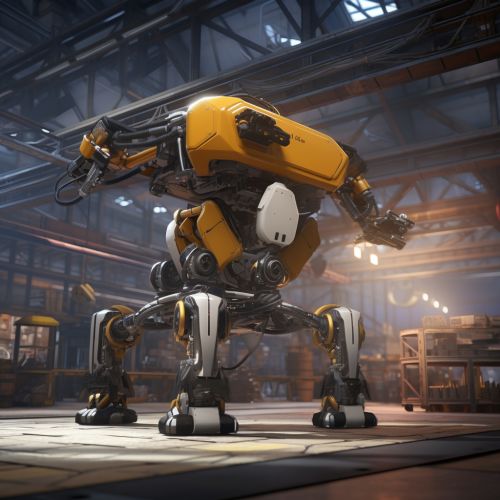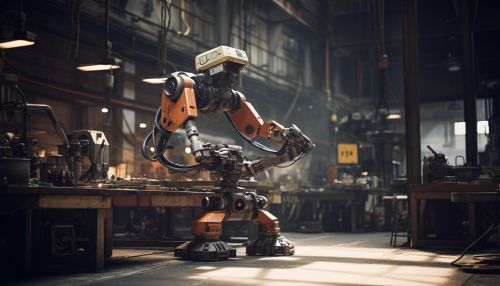Articulated Robots
Overview
An articulated robot is a type of industrial robot characterized by rotary joints. Articulated robots can range from simple two-joint robots to complex ten-joint robots. The more joints an articulated robot has, the greater its flexibility and precision.


Design and Structure
Articulated robots are designed with a series of rotary joints, each providing an additional degree of freedom. This allows the robot to move in multiple planes and perform complex tasks. The design of an articulated robot is often based on the human arm, with similar functionality and range of motion. However, unlike the human arm, the joints of an articulated robot are motor-driven, allowing for precise and repeatable movements.
The structure of an articulated robot typically includes a base, links, and joints. The base is the stationary part of the robot, while the links are the moving parts. The joints connect the links and provide movement. Each joint is controlled by a motor, which can be either electric, hydraulic, or pneumatic.
Applications
Articulated robots are used in a wide range of applications, including welding, painting, assembly, pick and place, packaging, and palletizing. They are also used in more specialized applications, such as surgery and research.
In industrial automation, articulated robots are commonly used for tasks that require high precision and flexibility. For example, in welding applications, an articulated robot can perform complex welds with high precision and consistency. In painting applications, an articulated robot can paint complex shapes and surfaces with high accuracy and uniformity.
In robotic surgery, articulated robots are used to perform precise and minimally invasive procedures. The surgeon controls the robot remotely, allowing for greater precision and control than traditional surgery.
In research, articulated robots are used to study and develop new robotics technologies and applications. They are also used in education to teach robotics and engineering concepts.
Advantages and Disadvantages
Articulated robots offer several advantages over other types of industrial robots. They have a large work envelope, meaning they can reach a large area around them. They also have a high degree of flexibility, allowing them to perform complex tasks. Additionally, articulated robots have high precision and repeatability, making them ideal for tasks that require accuracy and consistency.
However, articulated robots also have some disadvantages. They are typically more complex and expensive than other types of industrial robots. They also require more maintenance due to the number of moving parts. Additionally, the programming and operation of articulated robots can be complex, requiring specialized training.
Future Developments
The field of articulated robots is continuously evolving, with new developments and advancements being made regularly. Some of the key areas of focus for future developments include increasing the precision and speed of articulated robots, improving their flexibility and adaptability, and developing new applications.
One of the key trends in the field of articulated robots is the development of collaborative robots, or cobots. These are robots designed to work alongside humans in a shared workspace, rather than in a separate, fenced-off area. Cobots are typically smaller, more flexible, and safer than traditional industrial robots.
Another key trend is the use of artificial intelligence and machine learning in articulated robots. This allows the robots to learn from their experiences and adapt their behavior accordingly, increasing their efficiency and effectiveness.
